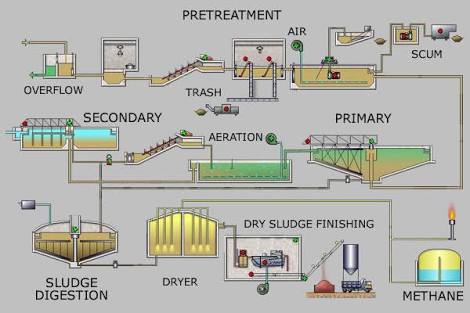Nanoparticles in Consumer Products; Possible Ecotoxicity!?
stemng·@fejiro·
0.000 HBDNanoparticles in Consumer Products; Possible Ecotoxicity!?
I once heard someone say, our cellphones should be one of the major forms of disease distribution. His point was, we take them everywhere. The toilet, kitchen, public places… you name it, our cellphones are there. <div class="pull-left"><center><img src=" " /><br/><em><a href="https://www.pexels.com/photo/bag-electronics-girl-hands-359757/">We use them everywhere</a></em></center></div> After sneezing, the next thing we reach for is our cellphones, even while eating, we are with them. Think of those germs being transferred from different places and eventually into our mouths. After all, it is not as if we clean them! I mean, our cellphones should most probably be the end of us. But then, it seems not to be that way. If we actually think of it logically, our cellphones should be the major medium for transporting pathogenic microbes that should be detrimental to our health. But gladly, they do not really. Why not? You might wonder… It is because of the presence of Nanoparticles! Never heard of those? Well, here’s a little insight. ## What are Nanoparticles? <div class="pull-right"><center><img src=" .jpg)" /><br/><em><a href="https://www.google.com.ng/search?q=nanoparticles+images&client=tablet-android-transsion&prmd=inv&source=lnms&tbm=isch&sa=X&biw=800&bih=1280&tbs=sur:fc&ved=0ahUKEwihwZrl4rvZAhUKYVAKHdZlAdAQlJcCCC4oEA#imgrc=X5xOIElVPxZm_M:)">Gold Nanoparticles</a></em></center></div> Nanoparticles are particles of Nano-size range. This is basically less than 100nm. A strand of human hair is about 60,000 to 80,000nm in diameter, this gives a little idea on how small Nanoparticles really are. Nanoparticles although small, have a large surface area which makes them useful and applicable in different areas of life. The major advantage of Nanoparticles is the fact that despite their small size, they actually do have their atoms present on their surfaces which makes it easier for them to react or collide with other materials. When nanoparticles are maneuvered or engineered, there are so many ways they can be applied. This includes providing water-resistant capability, antimicrobial properties and even anti-residual effect. This is where our smart phones come in. They prevent residues and even fight off microbes making them safe and helps them last longer. Same technique applies to laptops and cameras. There is even talk of use of engineered nanoparticles for the production of smart phones that you could just roll and put into your pockets. *This is pretty cool by the way.* Nanoparticles are also used in our eyeglasses, sun screens, repellants, and there is talk of possible application in medicine for treatment of cancer and other incurable diseases, easier and earlier diagnosis of diseases and even in the production of regenerative medicine. Vehicles that are automotive are not left out, as engineered nanoparticles are there in the battery systems, solar panels and even in the exhaust. Even lightweight cars are that way because of nanoparticles. Our homes are also not left out as even our silver cutlery, jewelries and even some of our fabrics contain nanoparticles. In essence, nanoparticles are included in so many consumer products and pretty much makes life easier in so many ways. Now, Nanoparticles are so useful and all, but the real question is, what happens when they are released into our environment afterwards? Here’s the little, current studies have shown. ## Ecotoxicity of Nanoparticles The use of products containing nanoparticles, leads to their release into our environment. Most of these Nanoparticles released into the environment eventually gets into our sewage or Waste Water and then to the Waste Water Treatment Plant. <center>.jpg) [Waste Water Treatment Process](https://upload.wikimedia.org/wikipedia/commons/5/54/ESQUEMPEQUE-EN.jpg)</center> #### Effects in Activated Sludge If you understand the concept behind Waste Water Treatment Plants, then you will understand the fact that they treat the waste water by using microbes. These microbes utilize oxygen and degrade contaminants in the activated sludge process. They use the contaminants as substrates, digest them and then transform them to a form suitable to be released into our environment. With the increase in the usage and release of Nanoparticles in our environment and eventually into the Waste Water Treatment Plant, Nanoparticles are now present in the sludge. Most of the microbes present or introduced into the sludge have no mechanism or are not made to digest nanoparticles. This means, even after the treatment process, the nanoparticles still remain in the sludge and are released back into the environment which could be detrimental. These nanoparticles do not just remain inactive in the sludge as they are also able to interact with the important microbes performing the degradation in Waste Water Treatment. Nanoparticles are not able to directly penetrate the cells of microbes because they are colloidal. But then they have other methods of causing damage. They can produce reactive oxygen species thereby causing oxidative stress or environmental stress. This affects the activities of the microbes. Nanoparticles are also able to produce toxins which are extremely harmful to the cells of microorganisms. They also have the ability of forming aggregates, can adsorb and even precipitate or form complexes with ligands which mitigates their toxic effects in whatever environment they find themselves. These all affect the activities of the microbes in the activated sludge process and for those microbes that cannot withstand the effect, they find it difficult to perform their degrading functions. ### Effects in Anaerobic Digestion The effects of Nanoparticles are not only shown in Waste Water Treatment Plants. It also extends to Anaerobic digestion of materials to produce biogas. Nanoparticles have been shown to interact with methanogens in anaerobic digesters thereby significantly slowing down biogas production. Most of these methanogens, with the exception of *Methanosarcina* spp., find it difficult adapting to the presence of nanoparticles and their activities. This is manifested in the increase in the presence of Volatile Fatty Acids in the digestate which is not supposed to be so. Especially since the volatile fatty acids are what is utilized by the methanogens to produce the biogas and excess of this means the work is not being done, at least not in the way it is supposed to. In conclusion, including engineered nanoparticles in most of our consumer products is indeed very beneficial and could even be life-saving. But our environment should also be considered since the end point of usage of such products means release of nanoparticles into our environment. With the effects on Anaerobic Digesters and Activated Sludge, although little, but still significant, it shows there could be some effects on our crops especially since the end products after sludge treatment is used as manure in our farms. More work still needs to be done though to ascertain the exact effects of nanoparticles in our environment, especially since there is the issue of bioaccumulation that usually goes with increased usage. Thanks for reading! References [Nanoparticles](https://www.acs.org/content/acs/en/education/resources/highschool/chemmatters/past-issues/archive-2012-2013/nanoparticles.html) [Size of Nanoparticles](https://www.forbes.com/sites/jimhandy/2011/12/14/how-big-is-a-nanometer/#105d9cdc6fb0) [Benefits and Application of Nanoparticles](https://www.nano.gov/you/nanotechnology-benefits) [Ecotoxicity of Nanoparticles](https://www.researchgate.net/profile/Frederic_Coulon/publication/239069495_Evaluation_of_engineered_nanoparticle_toxic_effect_on_wastewater_microorganisms_Current_status_and_challenges/links/00b4951d19512bdfcd000000/Evaluation-of-engineered-nanoparticle-toxic-effect-on-wastewater-microorganisms-Current-status-and-challenges) 
👍 fejiro, soekie, gidionline, curx, msp-lovebot, thankgodikkc, atikajayboy, shaka, smasher, henrychidiebere, steemstem, anarchyhasnogods, robotics101, justtryme90, lemouth, mobbs, foundation, the-devil, himal, lamouthe, nitesh9, ovij, rachelsmantra, kerriknox, gra, rjbauer85, kryzsec, amavi, dber, mystifact, gentleshaid, carloserp-2000, kenadis, hadji, fredrikaa, abigail-dantes, dysfunctional, ksolymosi, leczy, juanjdiaz89, lafona-miner, dna-replication, curie, liberosist, meerkat, locikll, hendrikdegrote, anwenbaumeister, kushed, pharesim, jasimg, xanderslee, markangeltrueman, aboutyourbiz, spectrums, steem-id, velourex, cotidiana, pacokam8, oscarcc89, cryptonator, gotgame, rscalabrini, wagun001, steemedia, cebymaster, teofilex11, dickturpin, bp423, dreamien, redpillproj, steemtaker, hrissm, olawalium, ifioklee, florae, steemstem-bot, stach, tolarnee, rogerman, lumen77, mdtipo, pasaift, admiralsp, jeffiyaro, kisom1, baboyed1000, estrellamag, caesar2341, aristokratos, rijal8466, valarmorg, pepememes, candyman, ejemai, ewuoso, prechi, biplob12, umar97, mike4christ, matthiasjohn, deril, estherekanem, samtexprints,